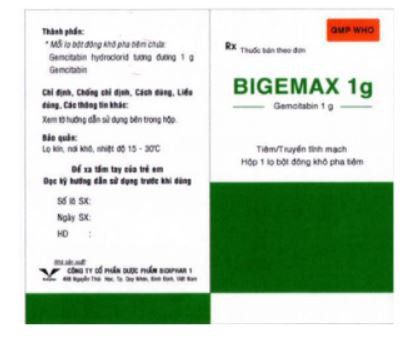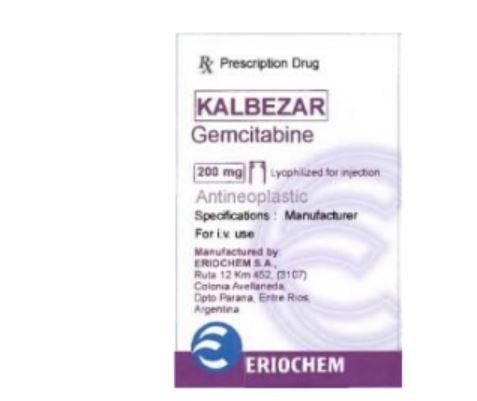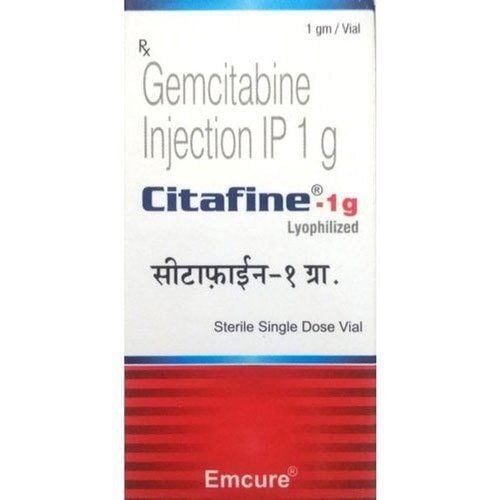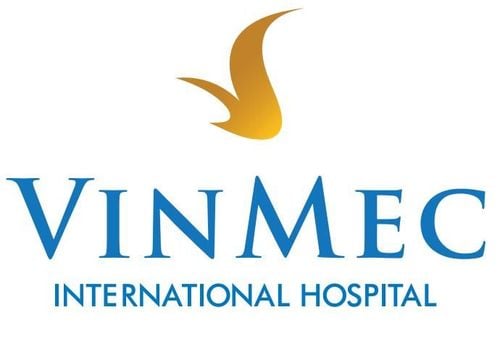This is an automatically translated article.
Posted by Master, Doctor Mai Vien Phuong - Department of Examination & Internal Medicine - Vinmec Central Park International General Hospital
Pancreatic cancer is a type of cancer that forms in certain cells of the pancreas. Most patients with pancreatic cancer (about 95%) start in the exocrine pancreas. Tumors can also form in the endocrine pancreas, but these are uncommon and are usually benign (not cancerous).
1. What is the pancreas?
The pancreas is a leaf-shaped organ that produces digestive enzymes and hormones like insulin. The pancreas is located high in the abdomen, near the major arteries and veins. The pancreas has three parts - the head, the tail, and the body of the pancreas. Digestive enzymes and hormones produced in the pancreas travel from the pancreas to the duodenum (first part of the small intestine) through a tube called the pancreatic duct. The part of the pancreas that produces hormones is called the endocrine pancreas, and the part that produces digestive enzymes is called the exocrine pancreas.
2. What is pancreatic cancer?
Pancreatic cancer is a type of cancer that forms in certain cells of the pancreas. Most patients with pancreatic cancer (about 95%) start in the exocrine pancreas. Tumors can also form in the endocrine pancreas, but these are uncommon and are usually benign (not cancerous).The content below provides information about exocrine pancreatic cancer. Most pancreatic cancers start in the exocrine cells of the pancreas.
There are three main types of pancreatic cancer by nature
Adenocarcinoma: This is the most common type of pancreatic cancer, accounting for about 80% of cases. Almost all cancers develop in the cells that line the ducts of the pancreas. Cysts are fluid-filled sacs that form in the pancreas. Most pancreatic cysts are benign, but some are cancerous. “Acinar” cell carcinoma: this cancer develops in the acinar cells of the pancreas, located at either end of the ducts that produce digestive enzymes

3. What are the symptoms of pancreatic cancer?
In the early stages, pancreatic cancer often has no symptoms. As the cancer progresses, symptoms can vary depending on whether the tumor is in the head, body, or tail of the pancreas.
Tumors in the head of the pancreas tend to cause more symptoms than those located in the pancreas or tail - this is because tumors in the head of the pancreas can press on the bile duct or pancreatic duct and cause conditions such as jaundice.
Symptoms that may be experienced with pancreatic cancer include:
Jaundice of the skin and irises (for pancreatic head tumors). Stomachache. Weight loss. Fatty stools. New-onset diabetes symptoms, such as extreme thirst, frequent urination, and fatigue. In the early stages of pancreatic cancer, there are usually few symptoms. You should see your doctor if you experience any of the symptoms mentioned above. However, it is important to remember that these symptoms can also be seen in people without pancreatic cancer that can be caused by other conditions.
4. The role of immunohistochemistry
Tissue-based markers offer the benefit of being more specific to tumor tissue, but at the expense of requiring more invasive collection techniques. Immunohistochemical analysis (IHC) is a widely used procedure used to visualize specific molecular markers and determine their distribution in clinical tissue samples. Although these markers may be useful in patients undergoing surgical resection, investigation is still needed to determine if there is prognostic value for these biomarkers in brush or biopsy specimens. before surgery or not.
Human balanced nucleoside transporter (hENT1)
Perhaps the best-characterized therapeutic predictor biomarker is the human balanced nucleoside transporter (hENT1). hENT1, ribonucleotide reductase subunits 1 and 2 (RRM1, RRM2),In a multivariate analysis, high expression of RRM2 and ERCC1, but not the others, was associated with recurrence-free survival (RFS) ) and worse overall survival (OS). Another study found that low hENT1 expression was associated with poor RFS and OS. Since hENT1 plays a major role in Gemcitabine internalization by pancreatic cancer cells, the main role of hENT1 is as a predictor of Gemcitabine chemotherapy, for which more data are available. Table 3 summarizes data on hENT1 and other tissue-based markers as prognostic markers of survival in pancreatic carcinoma.
SPARC protein
Acidic and cysteine-rich secreted protein (SPARC) is a stem cell glycoprotein that undergoes epigenetic silencing in pancreatic adenocarcinoma, but is often expressed strongly in the face is separated between tumor and stromal by stromal fibroblasts. Supportive data suggest that this interaction is important for tumor progression, metastasis and chemoresistance. SPARC stromal expression was observed in all disease stages suggesting that early expression is critical for tumor progression. Strong stromal SPARC expression in patients with moderately to moderately differentiated cancer who underwent surgical resection was associated with reduced survival compared with patients without SPARC expression.
Vascular endothelial growth factor (VEGF)
Vascular endothelial growth factor (VEGF) is a potent stimulator of angiogenesis, thereby facilitating growth and progression tumor growth. In IHC analysis, staining for VEGF was mainly demonstrated in the cytoplasm and cell membranes of cancer cells. Increased VEGF expression is associated with poor prognosis, including lower survival and increased lymphatic vessel invasion and lymph node metastasis. Similar to SPARC and hENT1, there are targeted therapies against VEGF, so it also has potential as a predictive marker.
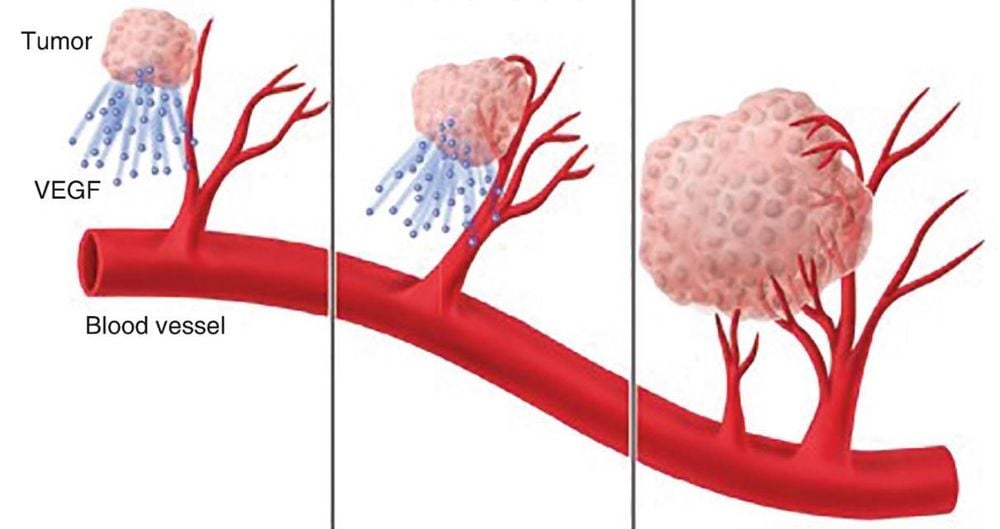
Smad4 is a tumor suppressor gene involved in transforming growth factor beta (TGF-B). As evidenced by its alternative name, DPC4 (deleted in pancreatic adenocarcinoma, site 4), loss or inactivation of Smad4 is seen in ∼50% of pancreatic carcinomas and leads to increased cell proliferation. cells by regulating progression from G1-S in the cell cycle. Loss of Smad4 expression has often been shown to be associated with reduced survival in pancreatic carcinoma.
KRAS Factor
KRAS (V-Ki-ras2 Kirsten mouse sarcoma oncogene) is a GTPase that activates proteins required for the transmission of growth factors and other cell signaling receptors. Overall, KRAS mutations were correlated with reduced survival. Interestingly, different mutation subtypes showed different survival times, with wild type GGT (glycine) converted to GAT (aspartate) being the most common and the only one prognosticated. on poor survivability. In addition, mutation analysis performed for these KRAS mutations can be performed by quantitative polymerase chain reaction (PCR), which is cheaper and faster than other sequencing methods and uses less data. more DNA, making it easier to perform multiple molecular analyzes on the same sample.
Perhaps the most exciting development in cancer therapy in the last few years has been the dramatic advancement in the use of immunotherapy. Although success is seen in some solid malignancies (melanoma, lung cancer, urothelial cancer), response rates in pancreatic cancer are very low. However, the immune response present in pancreatic cancer and emerging strategies to trigger this immune response or identify tumors with an immune-sensitive phenotype are showing great promise. In parallel with these efforts, there is growing evidence that the innate immune response in pancreatic cancer is predictive of treatment outcome. Immunohistochemical analysis identifying T cell and myeloid cell populations in pancreatic cancer, or the expression levels of negative checkpoint regulators (NCRs) has demonstrated prognostic value. These markers may also serve as important predictors of future response to immunotherapy.
Conclusion
There are countless potential biomarkers in the literature, but many are limited by specificity, disease heterogeneity, difficulty in sampling, and conflicting results. In addition, the majority of tissue-based biomarkers have been studied in resection specimens, and these patients represent only a minority of most pancreatic carcinoma subgroups. The most promising tissue biomarkers include hENT1, SPARC, Smad4 and VEGF as they may be of value in the preoperative period and may also have predictive value in guiding the treatment of pancreatic cancer individual. The novel serum-based markers are also valuable due to their minimally invasive approach and are fundamental for genetic analysis.
Currently, Vinmec International General Hospital has been implementing cancer screening packages. At Vinmec, there are fully modern diagnostic facilities such as: PET/CT, SPECT/CT, MRI..., blood marrow test, histopathology, immunohistochemistry test, gene test, lab test molecular biology, as well as a full range of targeted drugs, the most advanced immunotherapy drugs in cancer treatment. Multimodal cancer treatment from surgery, radiation therapy, chemotherapy, hematopoietic stem cell transplantation, targeted therapy, immunotherapy in cancer treatment, new treatments such as autoimmunotherapy body, heat therapy...
Thanks to modern facilities, a team of qualified doctors and medical staff, perfect medical services have brought confidence, health and good quality of life to patients. medical examination and treatment at Vinmec.
Please dial HOTLINE for more information or register for an appointment HERE. Download MyVinmec app to make appointments faster and to manage your bookings easily.
References
Yadav D, Lowenfels AB. The epidemiology of pancreatitis and pancreatic cancer. Gastroenterology. 2013;144(6):1252-1261. Kilic M, Gocmen E, Tez M, Ertan T, Keskek M, Koc M. Value of preoperative serum CA 19-9 levels in predicting resectability for pancreatic cancer. Can J Surg. 2006;49(4):241-244.





